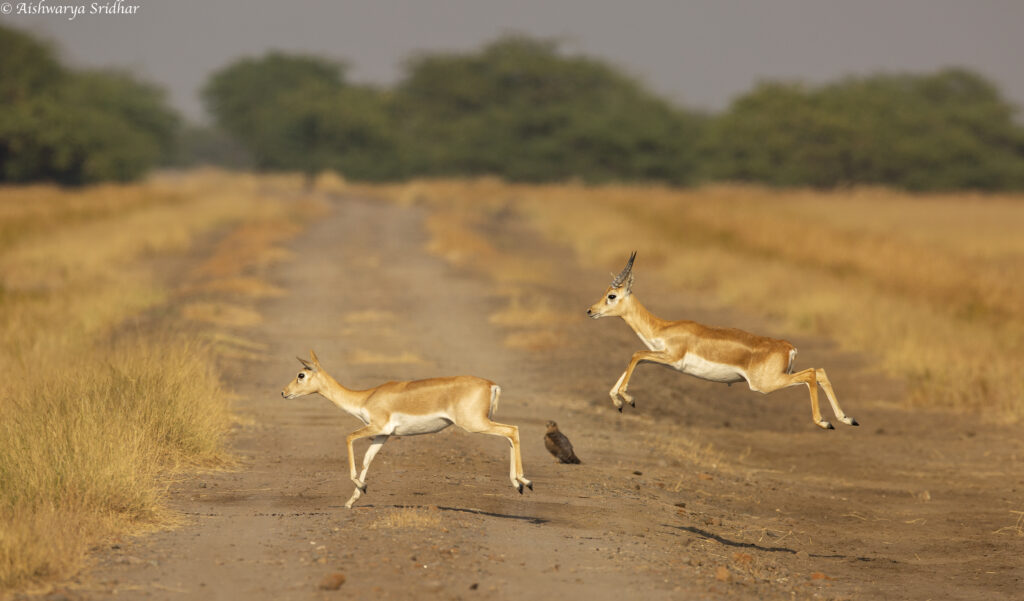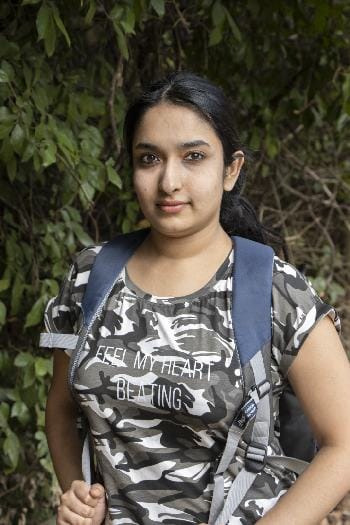Have you ever thought about the wonders and the unique facts of photography? It is the fact that you can spend an entire day taking photos, getting wet, muddy, tired and lost. Though, exhausting but photography can be exhilarating as well especially when you capture nature in its most raw and real form. Aishwarya Sridhar, wildlife photographer is one of them
Aishwarya Sridhar (23) is a young Indian Wildlife Photographer, wildlife presenter and documentary based at Navi Mumbai. She had made her parents Sridhar Ranganathan and Rani Sridhar proud by being the first Indian women to be awarded as the “Wildlife Photographer Of The Year 2020.” Aishwarya has a Bachelor’s degree in Mass Media from Mumbai University. A student of Dr Pillai Global Academy has excelled in academics, but her passion is photography.
Aishwarya has earned name and fame through her notable work in wildlife. Vaishnavi Jawalkar from The EarthView team has recently interviewed Aishwarya. Here are the excerpts from that conversation.
Q. Many congratulations “Wildlife Photographer Of The Year 2020.” You have made India proud. How does it feel?
Aishwarya: It feels great. I am yet to come to terms with the recognition.
Q. What inspires you to take up photography?
Aishwarya: Since I was 8-years old, I started going on expeditions with my father. I accompanied him on various treks. From an early age of my life, I started trekking in the jungles of Ratnagiri in Maharashtra. During these times, the creatures and their beauty amazed me. And slowly I grew passionate about clicking their pictures.

Q. How do you approach a new location that you haven’t shot at before? Do you conduct recce before the shooting, etc.?
Aishwarya: Oh! That’s challenging. Being a photographer and more peculiar, a wildlife photographer is not as easy as it seems. We eventually capture lives in a frame and need to be more specific with our work. Research is fundamental! When speaking about approaching the location, before the shoot, I read about the species, their characteristics, the environment in which they live, their movements. We don’t know when the birds may fly with their wings open, when they do a unique action or when they return. Therefore, with lots of patience and tranquillity, we capture their lives. Being prepared helps a lot.

Q. Besides being a wildlife photographer, what motivated you to make a documentary or feature a film on creatures?
Aishwarya: The documentary features facts can change lives. I am an animal lover and do not want to see them getting extinct. My first documentary Panje-The last wetland is based on the Panje-Dongari wetlands- the only remaining wetlands in Uran, Navi Mumbai. This region is a significant bird watching site in Mumbai Metropolitan Region. The wetland is the home for 1.4 lakh migratory birds in winter. It was essential to conserve these lastly surviving wetlands and the birds migrating there. With this film, the Bombay high court ordered to stop the reclamation of the wetland.

Q. At such a young age, you have received loads of accolades for your work which is truly inspiring for other aspiring photographers. Your comments on the same.
Aishwarya: I have been blessed. There has been much recognition and appreciation. For me, awards are secondary. I am thrilled when I can create an impact on the ecology through my work. I have won many awards for my works. I have won the very recent wildlife photography of the year 2020 by the Natural History Museum, London, and the Jackson Wild fellowship award. A year ago, I won the Woman Icon India Award and the Princess Diana Award. In 2018, I won the Young Digital Camera Photographer of The Year-winner-small world. Also, in 2016, I won the International Camera Fair Award. In 2016, I got the 2nd prize for World Sparrow Day Photography and Poem competition. And last but not the least, I won the Sanctuary Asia’s Young Naturalist Award in the year 2011.
Q. What do you think about the importance of the role played by wildlife photography to the environment?
Aishwarya: Photos are a tool to protect and conserve nature. They evoke feelings, emotions and visual power. Wildlife photography, not only captures the living creatures but also the surroundings in which they dwell. It reveals the beauty of the creatures and the natural design in which they live. One of the most significant benefits of wildlife photography is that it serves as a method to educate others about the beauty and vulnerability of plants and animals around the world. It serves the public with an important message to save the environment.

Q. What message do you have for youth?
Aishwarya: Yes. I would say that wildlife photographers serve as both digital artists and conservationists by bringing to light unique places and animals that most people would never have known existed before, and therefore wouldn’t have considered attempting to save. Photography plays a vital role in conserving the environment and the animals surviving in it. It pictures the natural beauty and encourages to preserve it. We understand the essential living factor of their lives.


Myam iam proud of you aapne mera sapna pura kar diya yesi trophy jitneka Muje aapke sath cam karneka moka mila to muze bohat khushi hogi good bless you myam aapki Fan anjali photographer and album designer